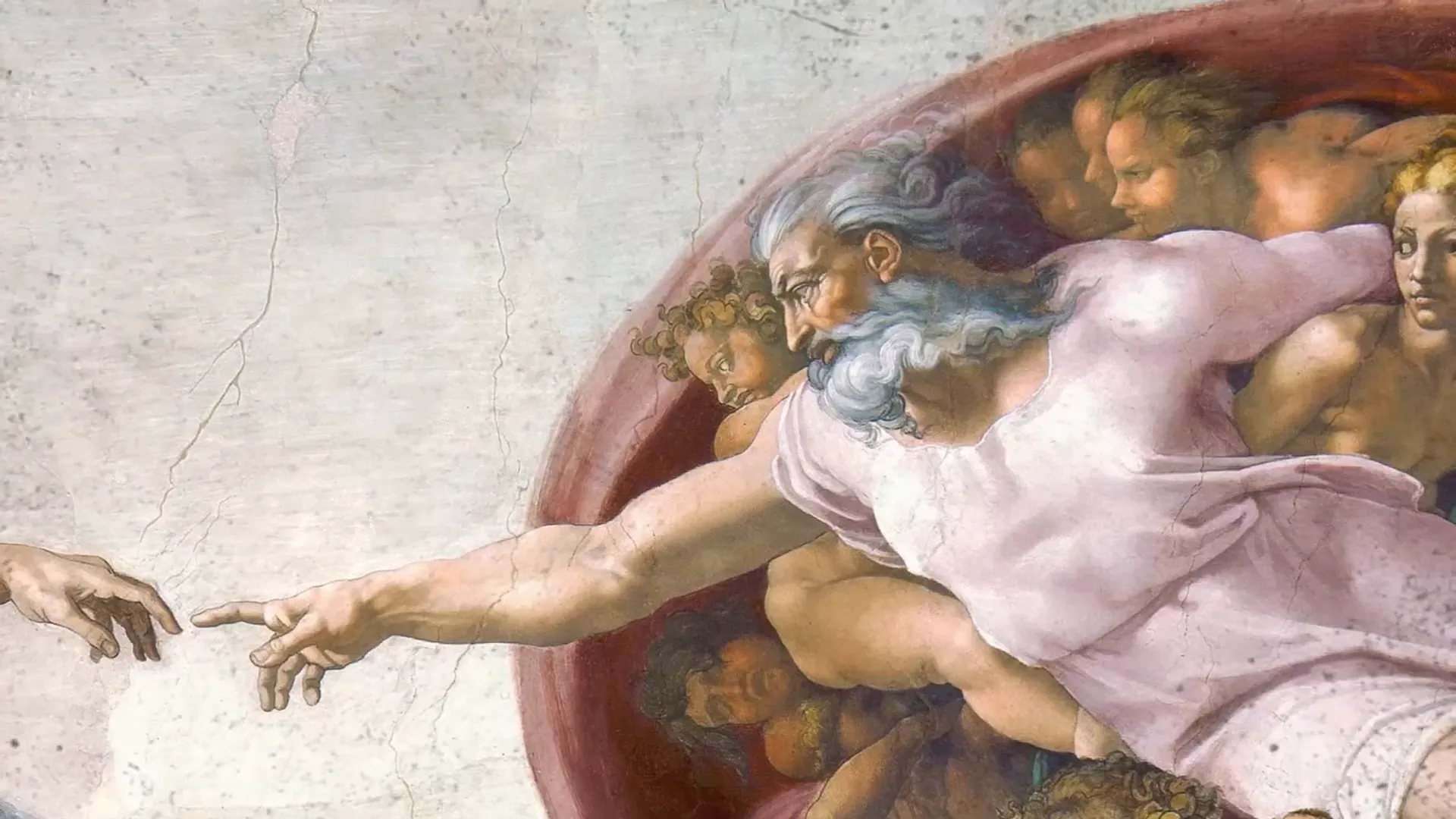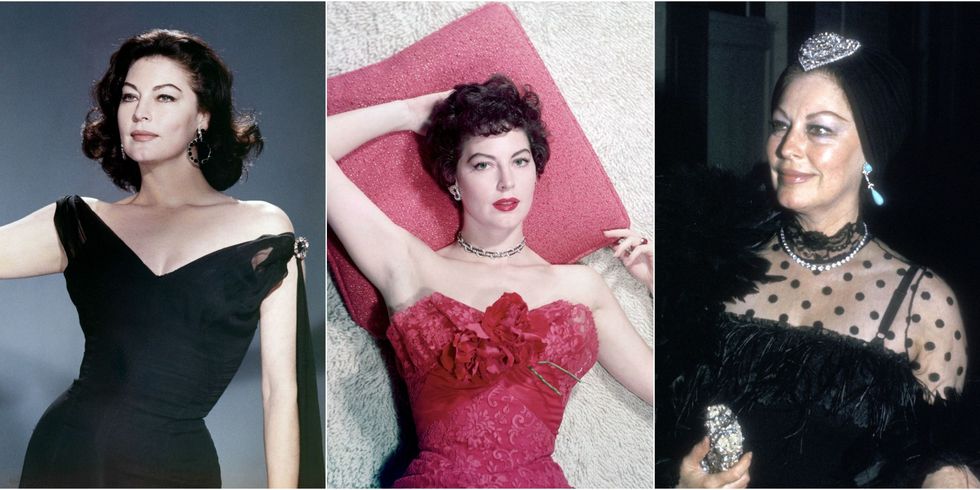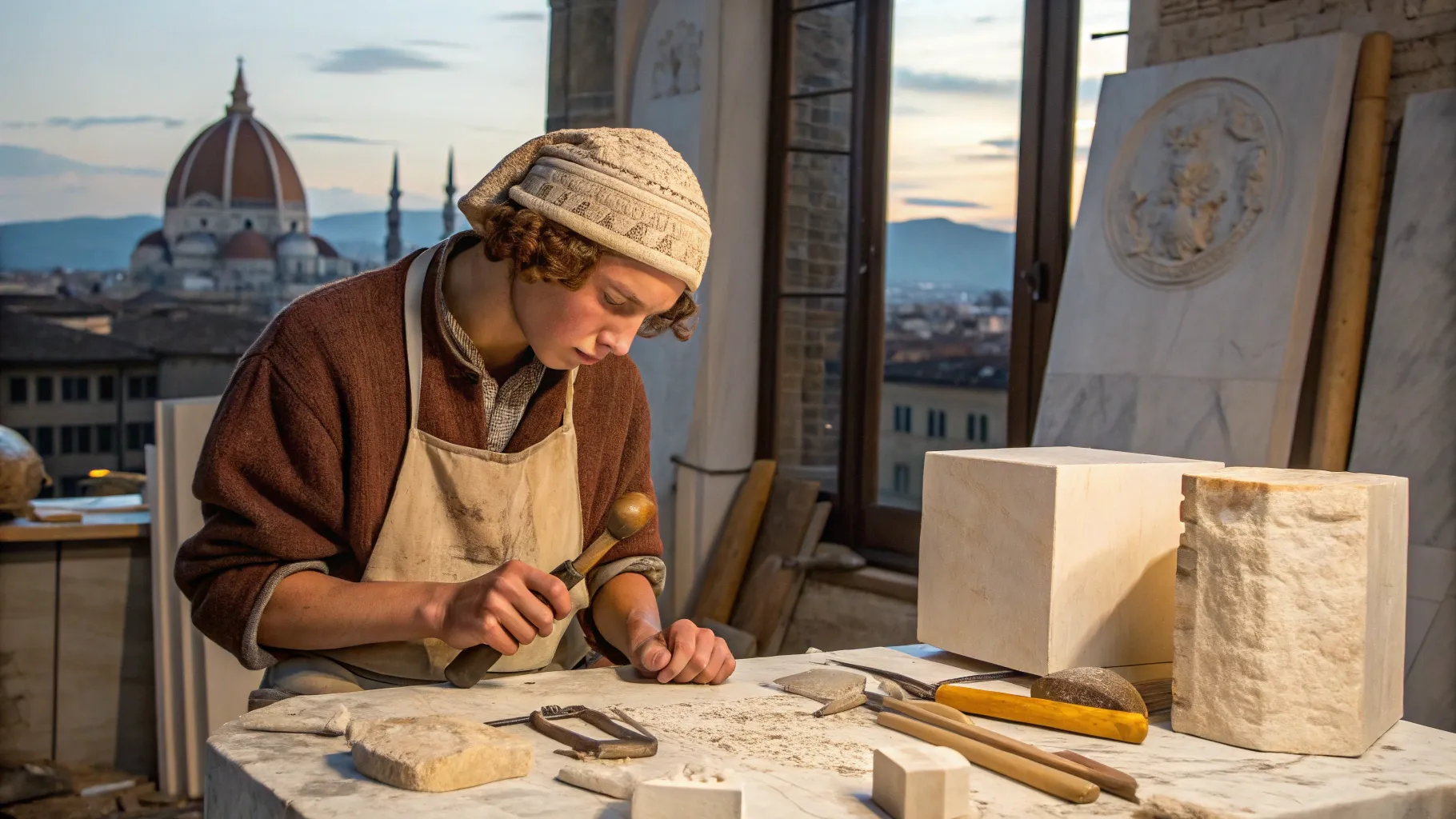
Explore (the) remarkable life of Michelangelo—one of history's most celebrated artists. From his humble beginnings to his iconic masterpieces (such as) the Pieta and the Sistine Chapel, this blog examines whether he truly deserves the title of 'the greatest artist of all time.' However, the complexities of his life and work reveal that greatness is subjective. Although many acclaim him, others may argue against (this) notion. Because of the myriad influences that shaped his art, one can’t easily assign him a definitive ranking. Nevertheless, Michelangelo's impact on the world of art is undeniable; it resonates through centuries.
Early Life and Background
Michelangelo Buonarroti (1475) was born on March 6 in Caprese, Tuscany, into (a) family of minor nobility. However, his family's status diminished shortly after his birth; they moved to Florence. At age six, tragedy struck (when) his mother fell ill and died. This led to Michelangelo being placed with a family of stonecutters. He later recalled: "With my wet nurse's milk, I sucked in the hammer and chisels I used for my statues." Although he faced hardship, it did shape his artistry.
Apprenticeship and Early Training
As a young boy (Michelangelo) was fascinated by art and cultural transformation happening in Florence. His father initially sent him to study grammar; however, Michelangelo's passion for art led him to pursue an apprenticeship with artist (Domenico Ghirlandaio). His confidence often caused friction with fellow students (1), culminating in an incident where a rival broke his nose, leaving a permanent mark.
Although Michelangelo (was) meant to apprentice for 3 years, he departed after just 1. His exceptional talent captured the attention of Lorenzo de' Medici, who invited him (to) work at Medici's Humanist Academy. This environment granted Michelangelo invaluable access to art and mentorship; however, he felt a compelling urge to explore his creativity. Although his time there was brief, it proved transformative. Because of this, he swiftly honed his skills and (his) future success became inevitable.
The Influence of Lorenzo de' Medici
Lorenzo de' Medici (often referred to as Lorenzo the Magnificent) played pivotal role in shaping Michelangelo's career; however, their relationship resembled that of father and son. Lorenzo's support allowed Michelangelo to flourish, because living with Medici family, Michelangelo found himself immersed in an extensive collection of art. This environment inspired him greatly, although it also brought expectations that weighed heavily on him.
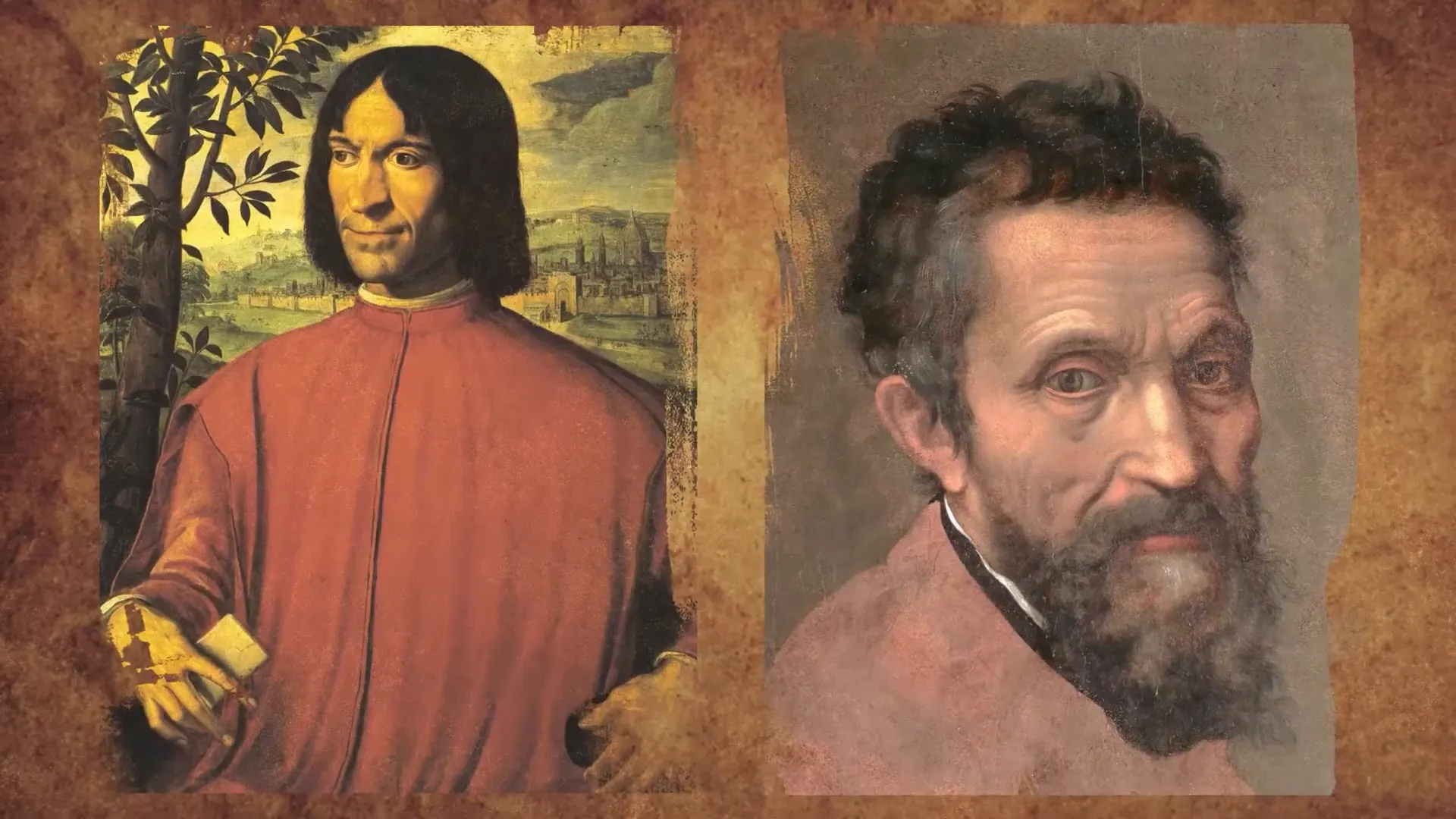
One notable incident (involving) Michelangelo's sculpture of Greek-style Cupid was particularly interesting. Lorenzo (suggested) that Michelangelo could make the sculpture seem ancient; however, this would require (him) to simulate burial. Because of this, Medici could sell it at a premium in Rome. The scheme worked, impressing Cardinal Rafael Riario, who later invited Michelangelo to Rome.
The Creation of the Pieta
In 1498, Michelangelo (an artist of considerable renown) received a commission to create Pieta—this masterpiece would ultimately define his career. This sculpture (which depicts Virgin Mary holding body of Christ) was carved from single block of marble that Michelangelo believed to be most perfect he had ever worked with. However, it was not just material that mattered: the vision behind it was equally significant. Although many artists attempted similar works, none could replicate emotional depth achieved in this piece.
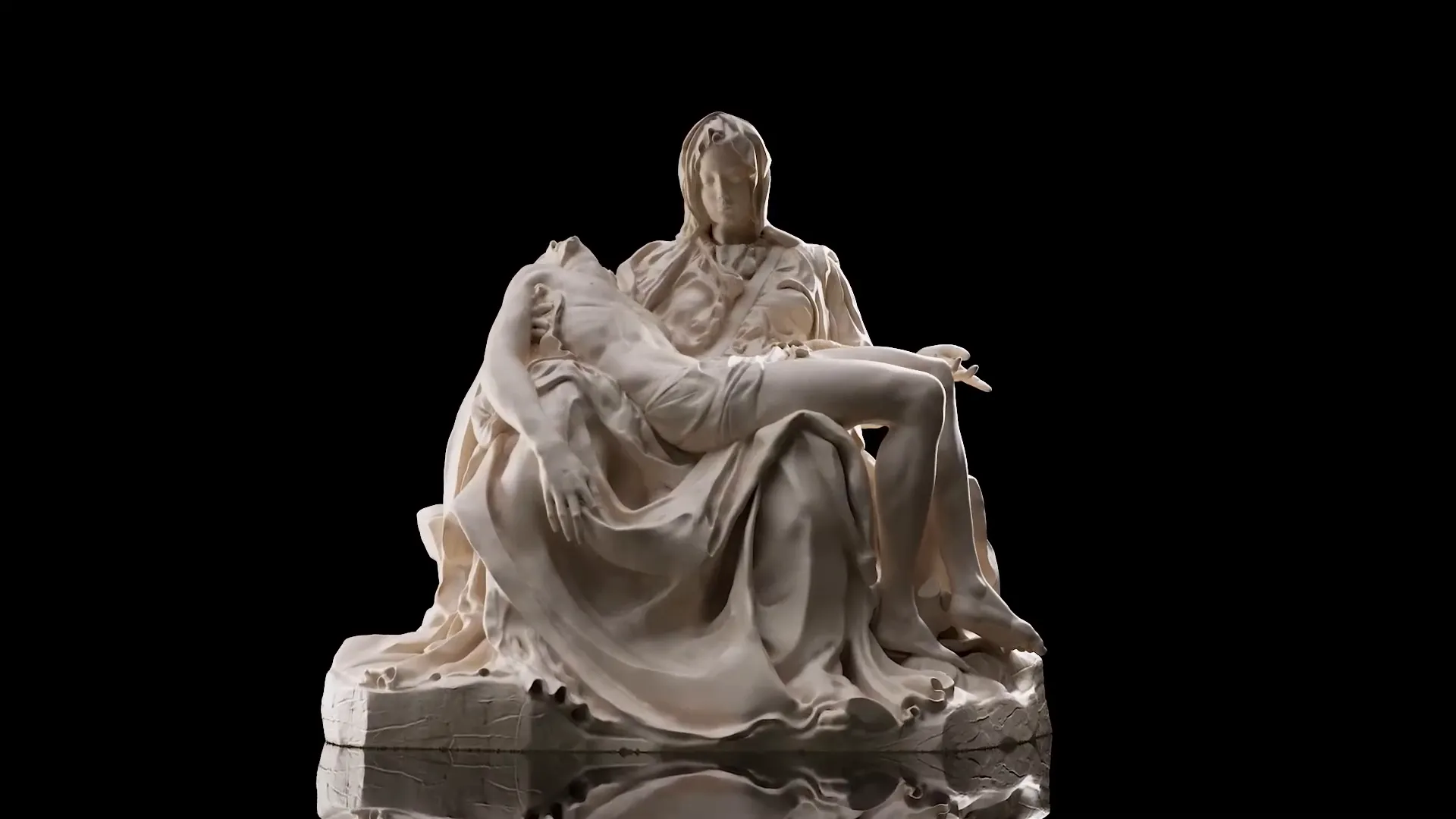
Michelangelo (perceived the sculpture as already present within the marble); his role was merely to liberate it. Interestingly, Pieta is the sole work he ever signed (a decision made out of frustration when rumors circulated that another artist had crafted it). This signature, emblazoned across Mary's chest, was intended to affirm his authorship. However, numerous critics contend that this act was not solely about ownership. Although he felt frustration, he also aimed to elevate the status of his work (because it represented a culmination of his artistic vision).
The Iconic Statue of David
Following (the) success of Pieta, Michelangelo was commissioned in 1501 to sculpt *the* statue of David. This work is considered 1 of his most iconic creations; standing over five meters tall. David represents the biblical hero before his battle with Goliath, embodying Renaissance ideals of human beauty and (intellect). However, this masterpiece also showcases the artist's technical prowess. Although many admire the statue, some critics argue it is too idealized. But, because of its grandeur, David remains a timeless symbol of strength and courage.
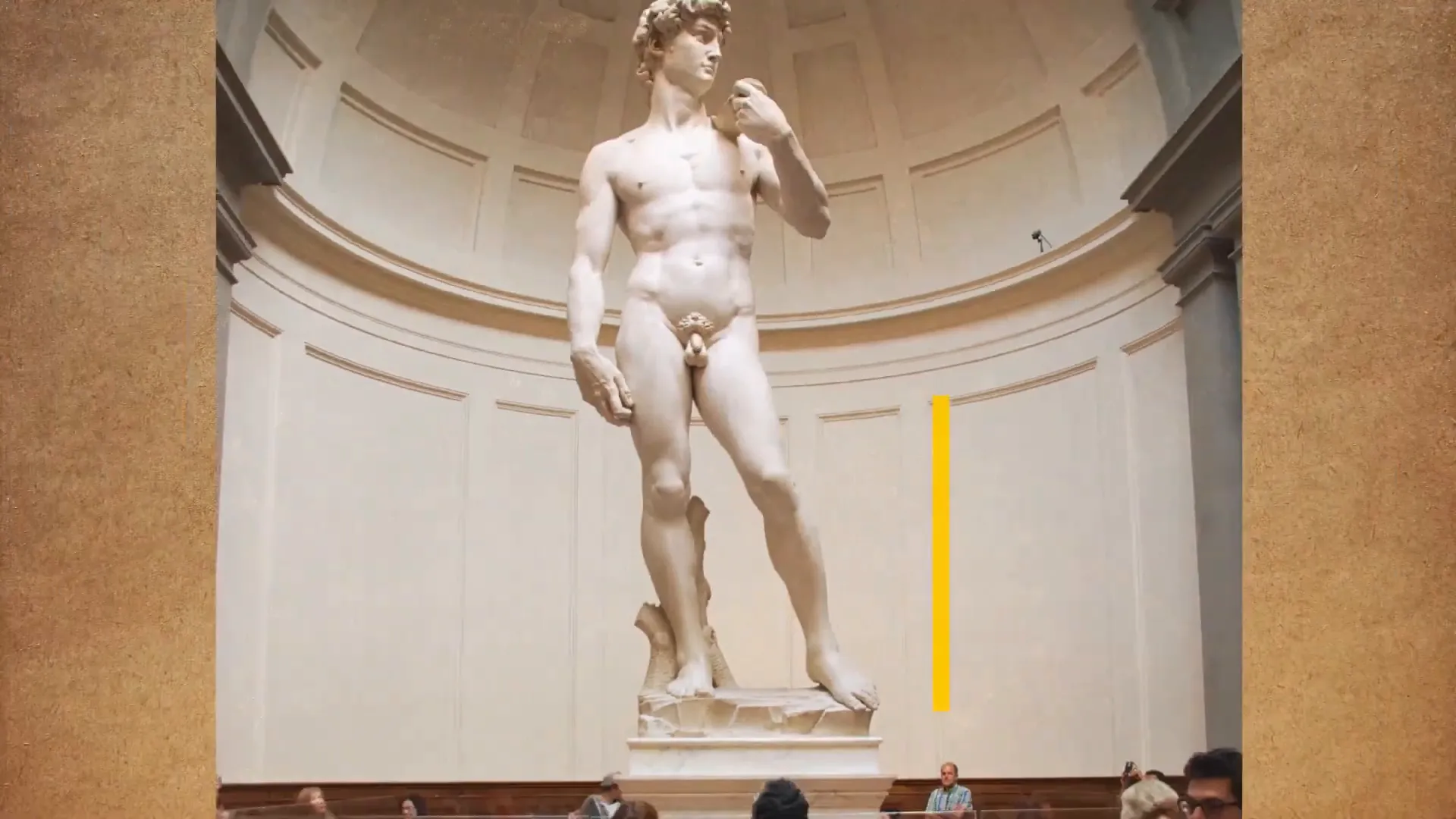
Michelangelo (1) decided to work with a block of marble that some artists had deemed unworkable; showcasing his exceptional skill. The statue's intricate details and lifelike expression have captivated viewers for centuries: solidifying Michelangelo's reputation as a master sculptor. However, this choice was not without challenges. Although many doubted the potential of the stone, he saw beauty where others saw flaws, because of his unique vision. But, it was his relentless dedication that truly brought the masterpiece to life.
Challenges and Setbacks
Despite (his) successes, Michelangelo faced numerous challenges throughout his career. He began working on grand tomb for Pope Julius II; however, funding issues led to the project's cancellation. Frustrated, Michelangelo left (Rome) for a time, yet he was eventually called back to undertake another monumental project: the Sistine Chapel ceiling. Because of this, his (artistic) journey was marked by both triumphs and setbacks; although he persevered through adversity.
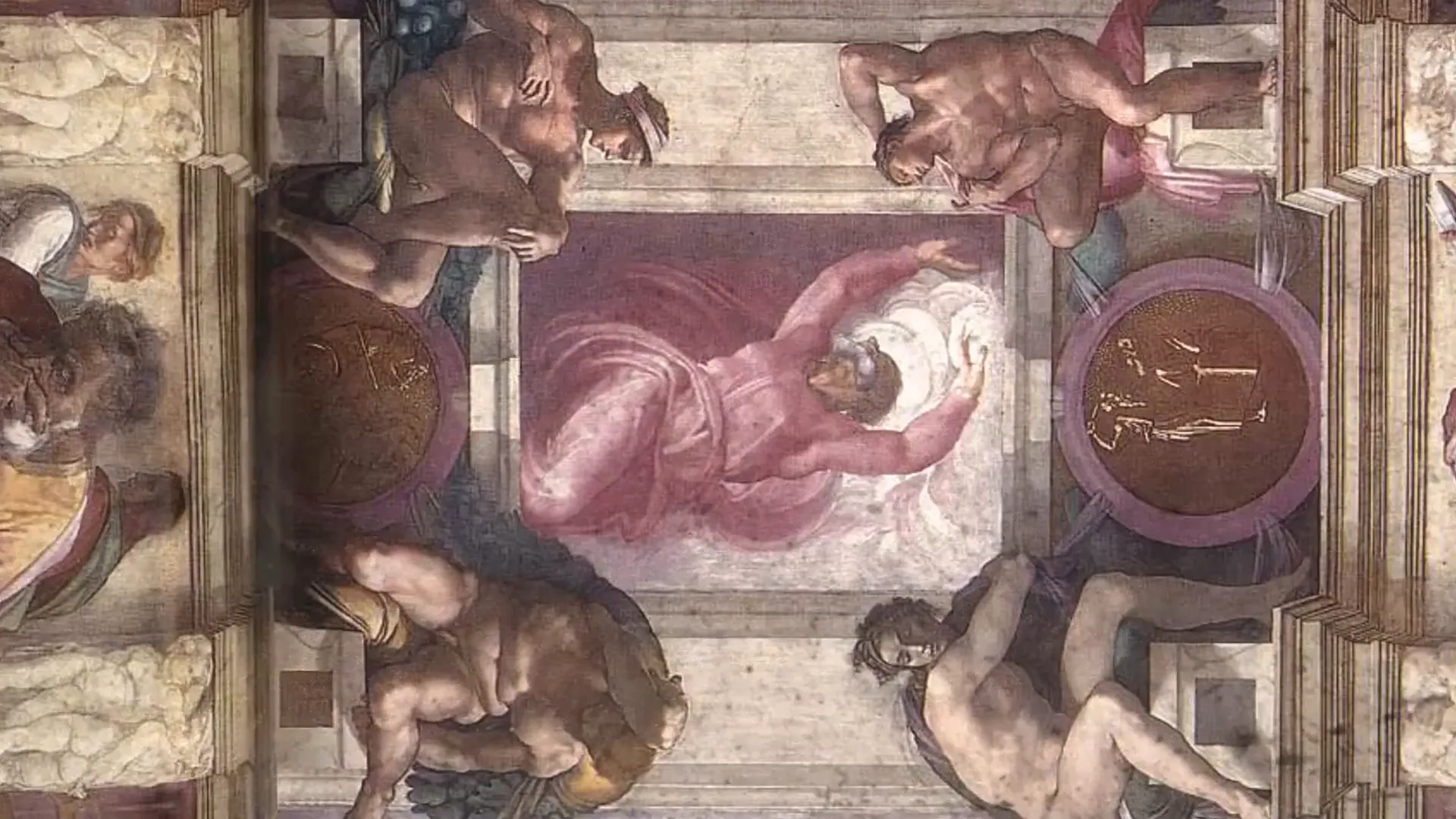
Initially (although) reluctant to accept the painting commission, Michelangelo eventually embraced this opportunity—despite viewing painting as (somewhat) lesser art form. Throughout the project, he faced immense pressure and criticism; particularly from church officials and his assistants who struggled (to) meet his exacting standards. However, this experience ultimately transformed his perception of painting, because it allowed him to explore new depths of creativity. Although he encountered numerous challenges, the journey proved to be rewarding.
Michelangelo's relationship (with patrons) was often tumultuous—marked by conflicts and misunderstandings. His work for Pope Paul III (especially the Last Judgment) faced backlash (1) for its nudity; however, it was defended by Pope. This showcases complexities of Michelangelo's artistic journey, although controversies surrounding it were significant. But, because of these challenges, his genius continued to shine through.
The Sistine Chapel: A Monumental Task
The Sistine Chapel (which) stands as one of the most significant artistic achievements in history: commissioned by Pope Julius II, Michelangelo was tasked with painting the chapel's ceiling (a project that would become synonymous with his name). This monumental undertaking spanned from 1508 to 1512, transforming the chapel into a vibrant canvas of biblical narratives. However, it is important to recognize the challenges Michelangelo faced, because his vision (although ambitious) required immense skill and dedication.
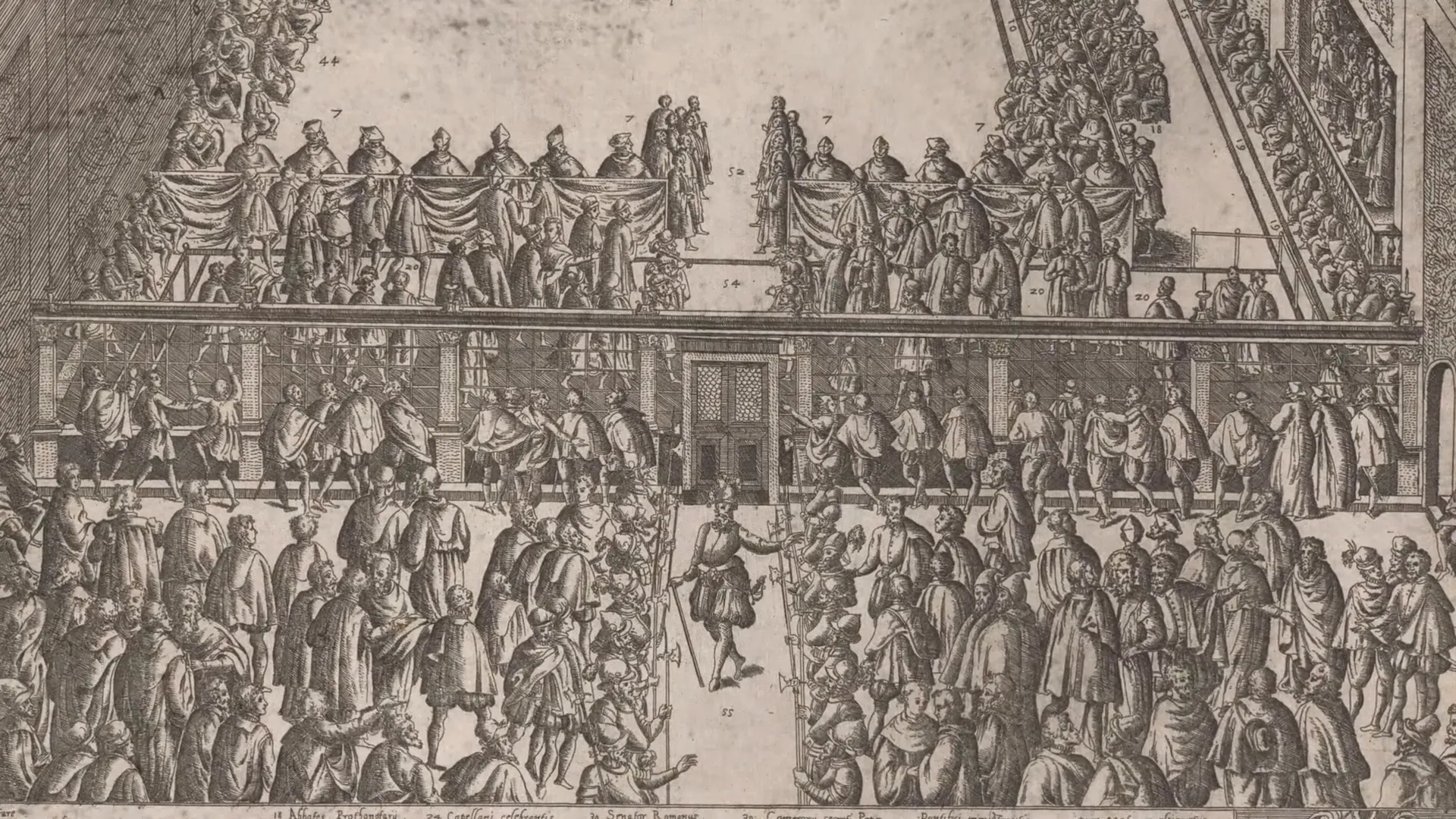
Initially (somewhat) hesitant to accept the commission, Michelangelo perceived painting as inferior to sculpture. However, he undertook the challenge—driven by his ambition (and pressure from the Pope). The project was not merely about decoration; it represented the power of the Church and served as a testament to Michelangelo's artistic prowess (this was essential). Although he had reservations, he ultimately seized the opportunity.
Artistic Vision and Execution
Michelangelo's vision (for ceiling) was indeed ambitious; he sought to depict not only Creation (1), Fall of Man and Last Judgment, but also other themes. The ceiling is divided into panels, each filled with intricate figures and vibrant colors that convey deep emotional resonance. However, this ambitious undertaking was challenging (2), because it required mastery of various artistic techniques. Although many admire his work, some critics argue that complexity can be overwhelming at times.
The artist's (unique) approach involved a technique known as fresco, where pigments are applied to wet plaster; this allows colors to become an integral part of the wall. However, this method demanded precision and speed (because) Michelangelo had to work quickly before plaster dried.
Physical and Mental Toll
Michelangelo's (work) on the Sistine Chapel took significant toll on his physical and mental health. He often worked in uncomfortable positions—leading to physical strain and exhaustion. In letters to friends, he expressed his frustration; describing challenges of painting while contorted (in) awkward positions. However, this did not deter him: it fueled his creativity. Although he faced many obstacles, he persevered, because art was his passion.
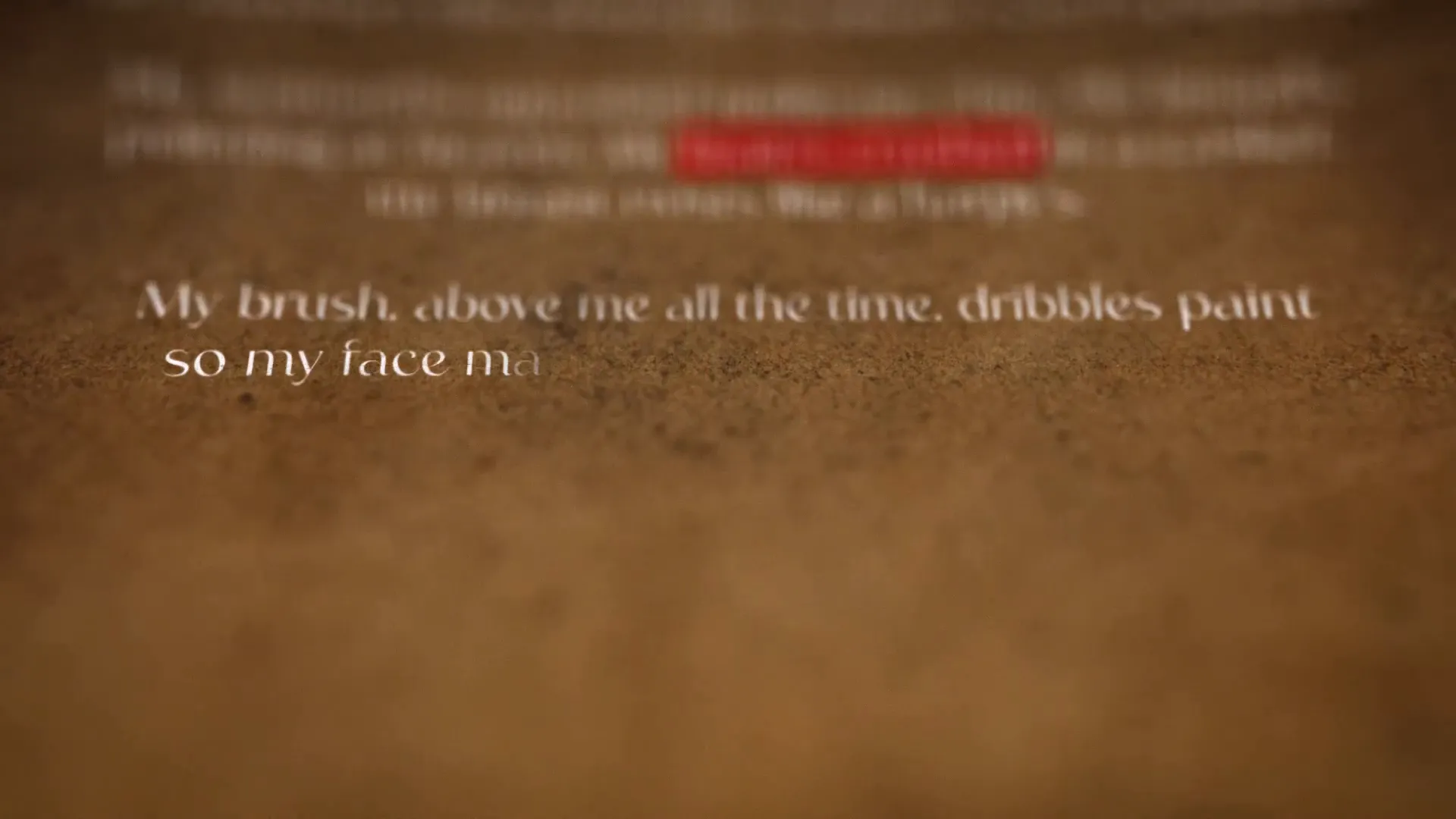
Despite hardships, Michelangelo's dedication never wavered (his relentless pursuit of perfection drove him to push the boundaries of his capabilities). This resulted in a masterpiece that has captivated audiences for centuries; however, it was not without its challenges. Although many admired his work, some criticized it (but these opinions did not deter him). Because of his unwavering commitment, he created art that transcended time and space.
Michelangelo's Struggles and Triumphs
Michelangelo's journey (although remarkable) was not without struggle. His relationships with patrons were often tumultuous; he frequently clashed with those who sought to impose their vision (on his art). This tension fueled his artistry—leading to some of his most profound works. However, the challenges he faced were significant and they shaped his creative process in ways that were both unexpected and transformative.
Conflict with Patrons
Michelangelo's relationship (with Pope Julius II) was complex; however, the Pope served as significant patron. He had high expectations, which often led to friction (1). The cancellation of grand tomb project became a source of frustration for Michelangelo. Although it was disheartening, this also opened door to the Sistine Chapel commission (2).
Personal Struggles
Michelangelo (renowned for his solitary disposition) frequently withdrew into his work to elude the pressures of the world. This isolation not only fueled his artistic genius; however, it also resulted in emotional struggles. His letters disclose a man profoundly introspective—wrestling with the weight of (his) responsibilities.
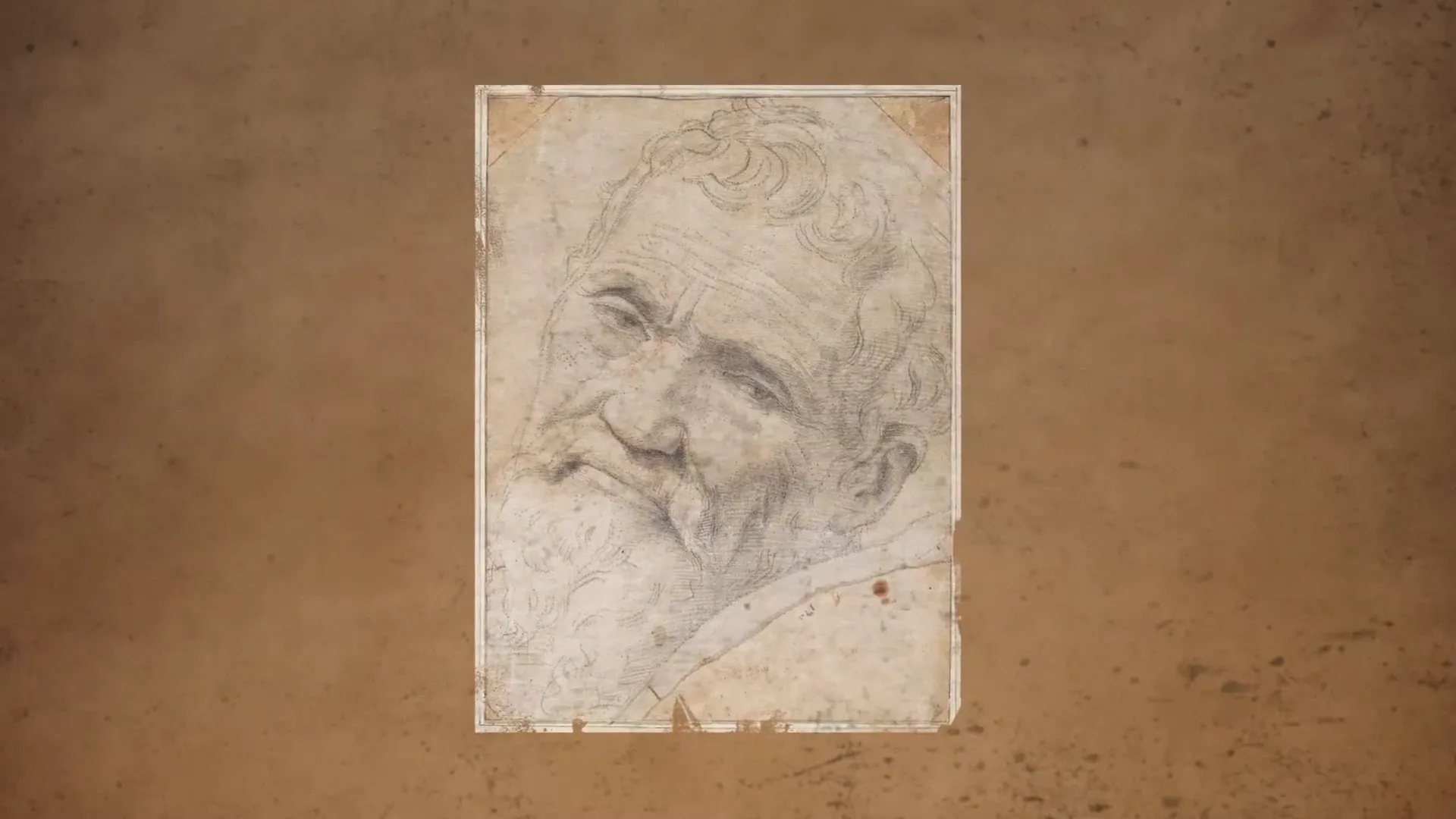
Rivalries with Raphael and Da Vinci
Throughout his career (1), Michelangelo faced rivalries that both challenged and inspired him. His relationships with contemporaries—like Raphael and Leonardo da Vinci—were marked by competition; however, there was also a sense of mutual admiration. Although these rivalries could be intense, they fueled his creativity (2) because this dynamic pushed him to innovate.
Raphael: A Complicated Rivalry
Raphael (known for his harmonious compositions) was seen as a rival during the time of the Sistine Chapel's creation. It is said that Raphael would sneak into the chapel to observe Michelangelo's progress; however, this rivalry was not merely professional. It was personal (because) Michelangelo felt that Raphael borrowed heavily from his style. Although the two artists had different approaches, their competition ultimately pushed each to excel further.
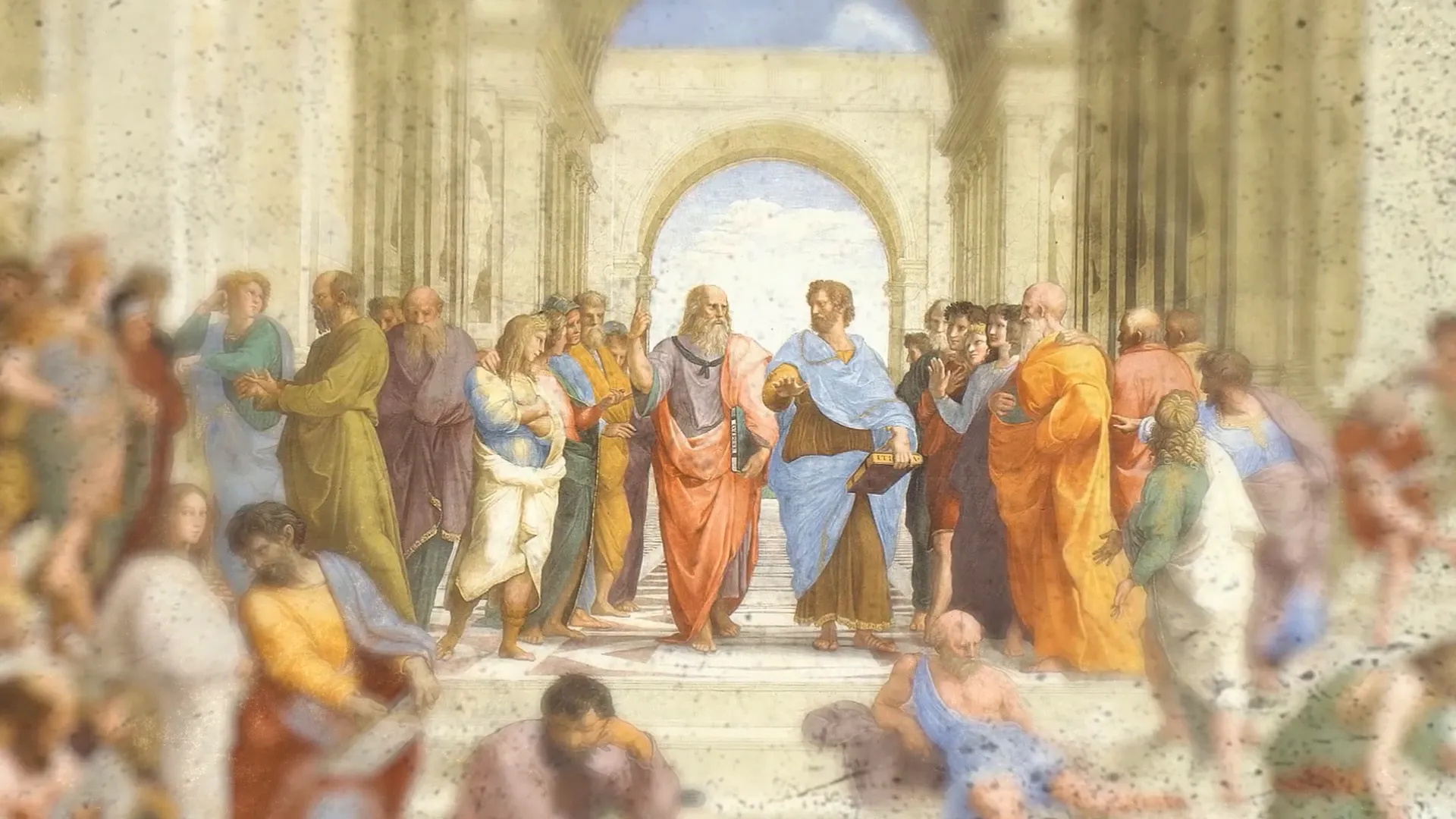
In the renowned fresco (entitled) "The School of Athens," Raphael incorporated a figure that resembles Michelangelo; some scholars (however) interpret this as a nod to their rivalry. Their relationship was a complex blend of admiration and resentment (because) it pushed both artists to refine their craft, although it created tension.
Leonardo Da Vinci: A Legacy of Competition
Leonardo da Vinci (1) was another contemporary whose presence loomed large over Michelangelo; however, their rivalry is steeped in myth. Stories suggest that Da Vinci left Florence to escape Michelangelo's intensity (because it was overwhelming). The competition spurred both artists to innovate—each striving to outdo the other in their respective mediums, but this relentless pursuit often blurred the lines between admiration and rivalry. Although they were contemporaries, the impact of their legacies continues to resonate through art history.
Later Works and Architectural Contributions
In the latter part of his life (1) Michelangelo expanded his repertoire to include architecture: leaving an indelible mark on the skyline of Rome. His work on the Dome of Saint Peter's Basilica is (2) testament to his versatility and vision; however, this expansion into architecture was not without its challenges. Although he faced (3) criticism, he persevered and ultimately succeeded, but it was not easy.
The Dome of Saint Peter's Basilica
Michelangelo (1) was appointed chief architect of Saint Peter's Basilica—a project that would symbolize the power of Catholic Church. His design for dome, characterized by its grand scale and harmonious proportions, remains one of most iconic architectural achievements in history. However, this achievement was not without its challenges; although critics had varied opinions, the overall impact was undeniable.
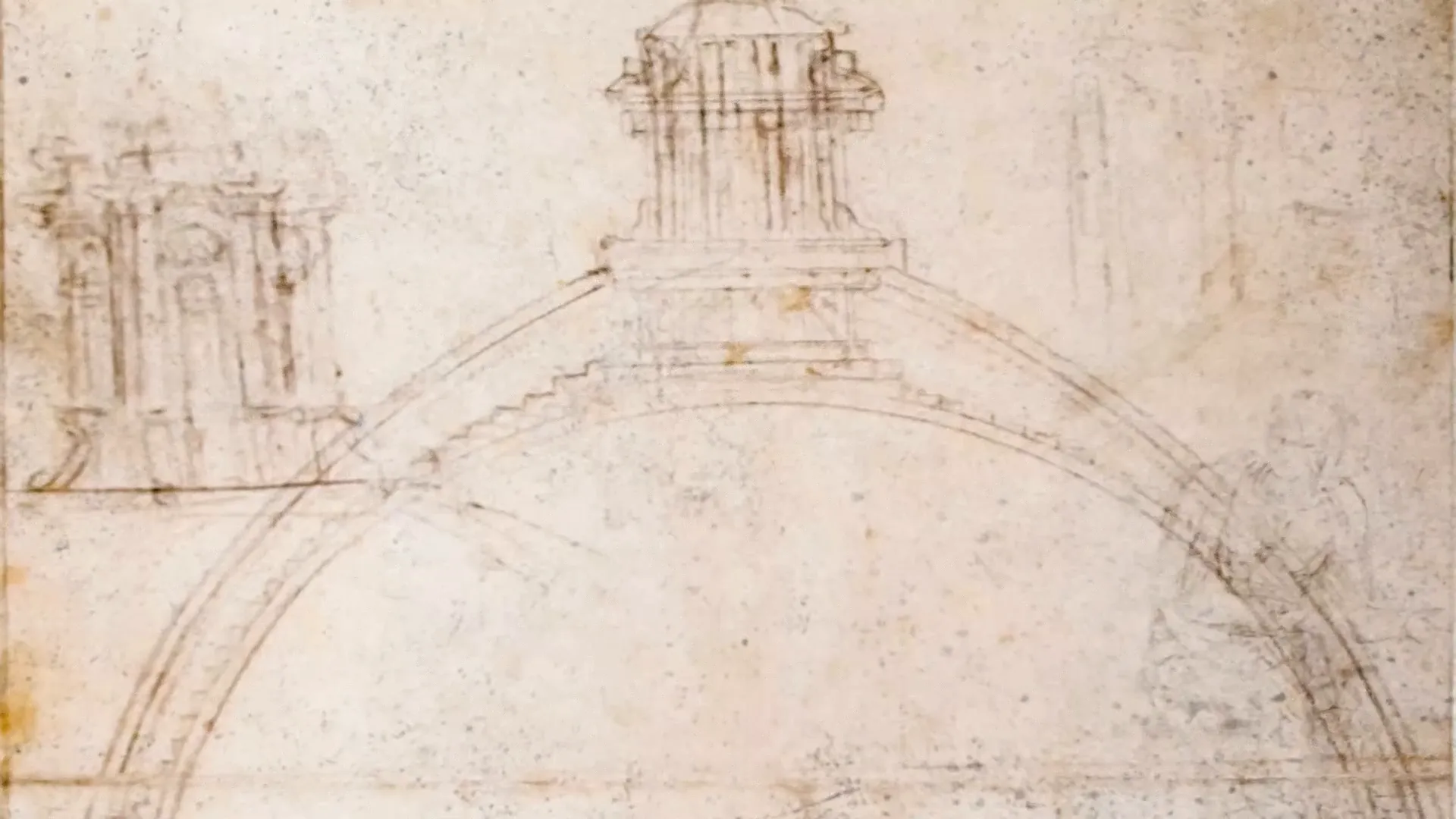
Despite facing numerous challenges (including funding and political pressures), Michelangelo's vision ultimately prevailed. The dome stands as a symbol of his genius, blending artistry and engineering in a way that few have achieved. However, this achievement is not without controversy. Although many admire the structure, some critics argue it overshadows other works. Because of its grandeur, it captures attention, but it also invites scrutiny.
Unfinished Works and Lasting Legacy
Michelangelo (a prolific artist) continued to create until his final days; leaving behind unfinished works that offer insight into his creative process. The Rondanini Pieta (incomplete sculpture) reveals the artist's relentless pursuit of perfection, however, even in the face of mortality. Although many admire his completed pieces, they often overlook beauty found in his unfinished endeavors. This complexity of his artistry demonstrates that greatness can emerge from imperfection, because he was always striving for more.
Is Michelangelo the Greatest Artist of All Time?
The question (of whether Michelangelo is the greatest artist of all time) is subjective. His contributions (to art and architecture) are undeniably significant: from the breathtaking Sistine Chapel to the iconic David. However, many argue that other artists rival his genius. Although his work remains influential, this debate continues (because) preferences vary widely among critics and enthusiasts alike.
Criteria for Greatness
To evaluate greatness (1), one must consider the impact of an artist's work on culture (and society). Michelangelo's art has transcended time; influencing countless generations of artists (however) inspiring movements across history. Although some may argue otherwise, this influence remains profound (because) it shapes our understanding of art itself.
Personal Reflection
Ultimately, greatness is measured not only by works produced (1) (however) also by the legacy left behind. Michelangelo's relentless pursuit of excellence, his ability to evoke emotion through art and his profound influence on the Renaissance makes him a strong contender for the title of greatest artist. However, this does not diminish the contributions of others, because every artist has their own unique impact. Although some may argue otherwise, the significance of his work cannot be overlooked (2) because it resonates deeply with many.
Conclusion and Reflection
Michelangelo's life (and work) encapsulate the spirit of Renaissance: blending artistry, intellect and ambition. His masterpieces (1) continue to inspire awe and admiration; however, they also invite us to reflect on depths of human creativity. Although he faced numerous challenges, his legacy endures because of this remarkable talent.
As we (1) contemplate the (2) notion of greatness, it is crucial to acknowledge the unique contributions of artists throughout history. Michelangelo's legacy—characterized by triumphs and struggles—serves as a reminder of the power of art to transcend time and connect us all; however, greatness is not solely defined by individual achievements. Although many artists have left indelible marks on society, the collective influence of their work shapes cultural narratives. This is because art reflects and challenges the human experience, inviting us to engage in deeper dialogues about our existence.
